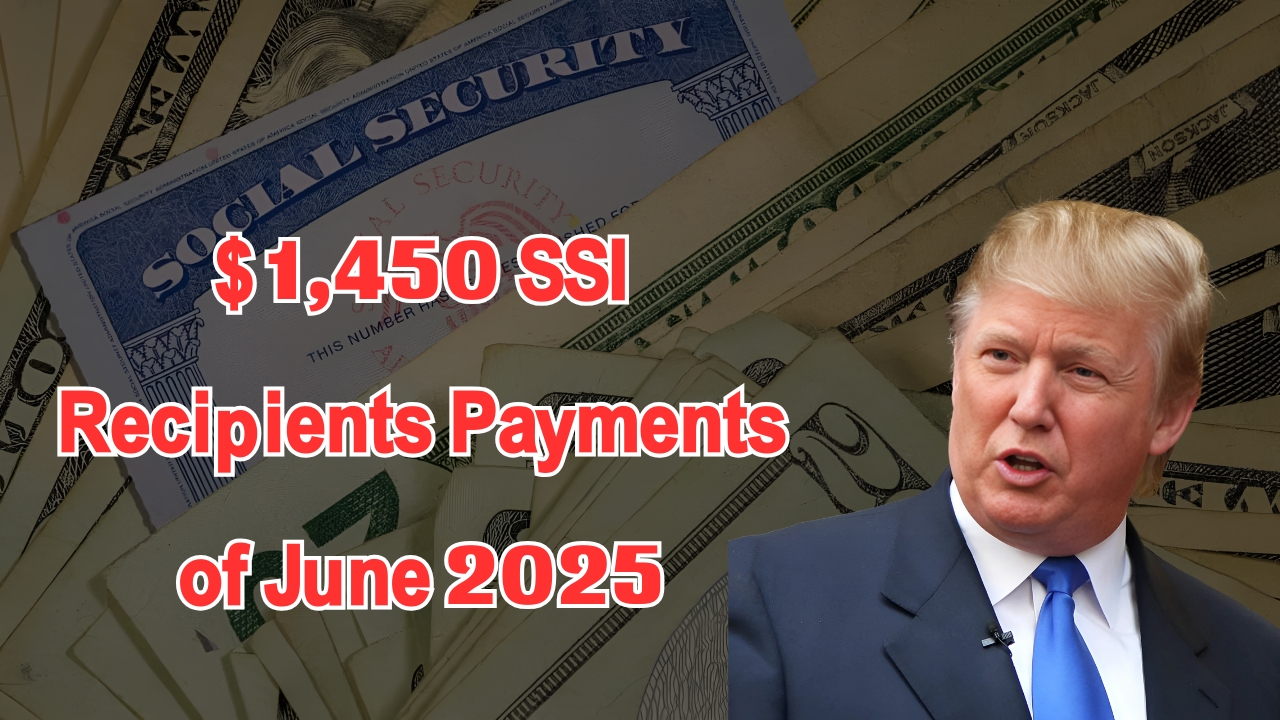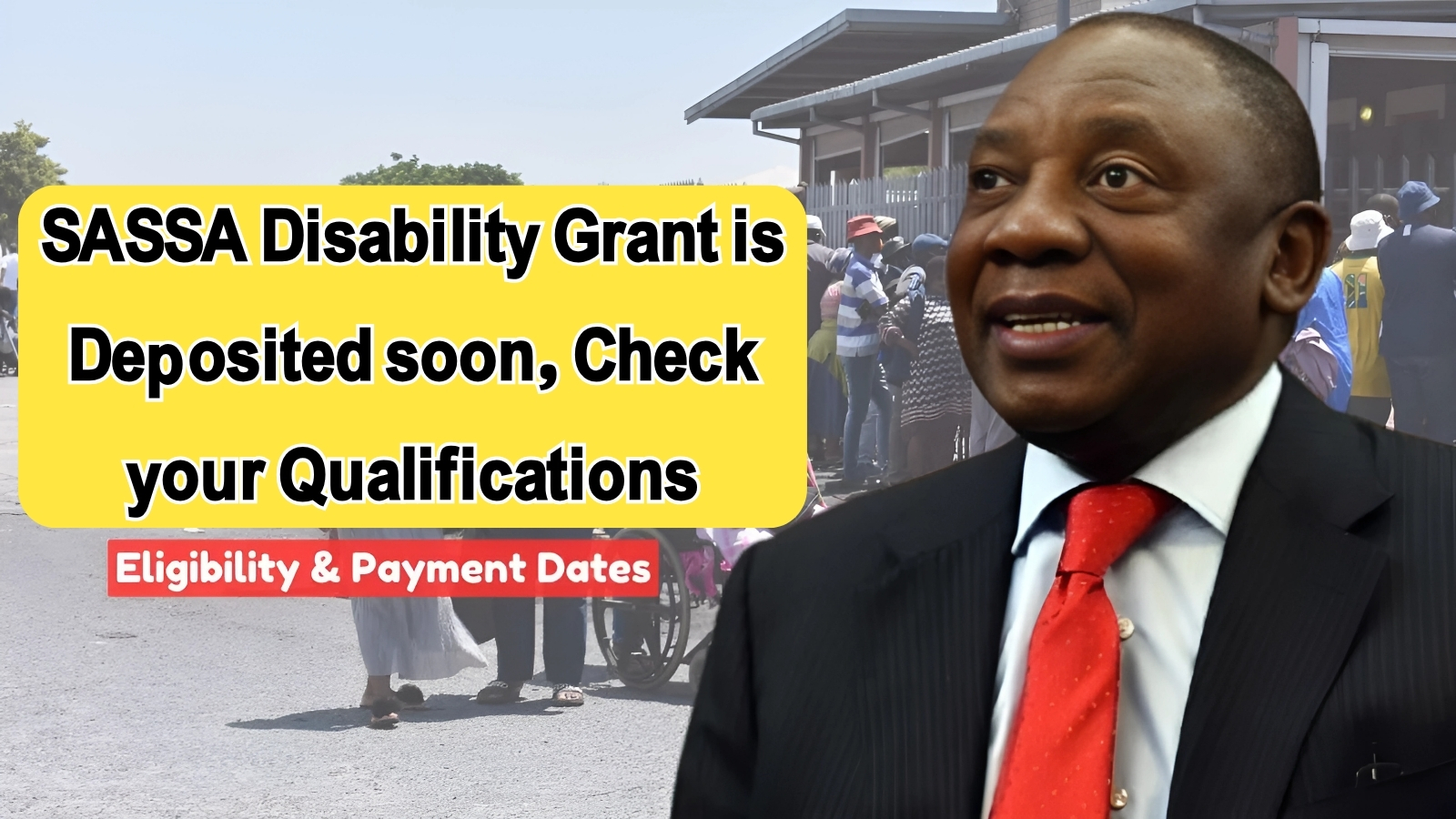Supplemental Security Income (SSI) recipients across the United States are preparing for their June 2025 payments, with eligible married couples potentially receiving up to $1,450 per month under the current federal benefit structure.
As the Social Security Administration continues implementing the 2025 Cost of Living Adjustment (COLA), understanding the payment schedule, eligibility requirements, and factors affecting benefit amounts becomes crucial for the nearly 7.5 million Americans who depend on this vital support program.
The SSI program serves as a financial lifeline for elderly, blind, and disabled individuals with limited income and resources, providing monthly payments that help cover basic necessities like food, clothing, and shelter.
With inflation continuing to impact household budgets nationwide, these payments represent essential support for some of the most vulnerable members of American society.
June 2025 Payment Schedule and Important Dates
SSI payments typically arrive on the first day of each month, but June 2025 presents a unique scheduling situation that recipients should understand.
The Social Security Administration’s payment schedule brings an early payment for SSI. Instead of issuing it on June 1, it will be distributed on May 30, 2025.
This timing adjustment occurs because Sunday, June 1, 2025, falls on a weekend when all SSA offices and banks are closed.
When the first day of the month falls on a weekend or federal holiday, the SSA automatically moves the payment to the last business day before the scheduled date.
This policy ensures that recipients don’t experience financial disadvantage or unnecessary delays in accessing their benefits.
The early June payment means that some SSI recipients may notice receiving two payments in May 2025 – their regular May payment on May 1 and their June payment on May 30.
This is not an error or duplicate payment, but rather the SSA’s standard procedure to avoid putting beneficiaries at a financial disadvantage.
For June 2025 specifically, the payment dates are:
-
May 30, 2025: SSI payments for June (distributed early due to June 1 falling on Sunday)
-
June 3, 2025: Social Security payments for those receiving both SSI and Social Security benefits, or those who began receiving Social Security before May 1997
Maximum Payment Amounts for 2025
The maximum monthly SSI payment for 2025 reflects the 2.5% Cost of Living Adjustment implemented at the beginning of the year.
For SSI in 2025, the maximum monthly payment is $967 for individuals and $1,450 for couples. However, actual payment amounts may be significantly lower based on various individual circumstances and eligibility factors.
The $1,450 maximum payment for couples represents the highest possible amount available to married recipients who meet all eligibility criteria and have no income reductions.
This amount provides crucial support for couples managing disabilities, advanced age, or blindness while living on extremely limited financial resources.
For individual recipients, the maximum payment of $967 per month provides basic support, though many recipients receive less due to income offsets, living arrangements, or other factors that affect benefit calculations.
An essential person on SSI can receive up to $484, which represents additional support for someone living with and caring for an SSI recipient.
Understanding Payment Reductions and Income Effects
While the maximum payments represent the highest possible amounts, most SSI recipients receive less than these figures due to various factors that reduce benefit amounts.
The SSA applies strict income and resource limits that significantly impact final payment calculations.
Work Income Impacts: For every $2 earned from work, the SSA reduces SSI payments by approximately $1. This reduction encourages work while maintaining some benefit support, but it means that recipients engaging in employment will see their SSI payments decrease correspondingly.
Non-Work Income Effects: Income from non-work sources creates dollar-for-dollar reductions in SSI benefits. Non-work income includes sources such as Social Security benefits, pensions, unemployment compensation, worker’s compensation, and certain family support payments.
Living Arrangement Considerations: Recipients living in someone else’s home without paying their fair share of food and shelter costs may have their SSI payment reduced by up to $342.33 per month.
This in-kind support reduction significantly impacts many recipients who live with family members or in shared housing arrangements.
Spousal Income Effects: For married couples, both spouses’ income affects the household’s SSI payment calculation. The SSA considers the combined resources and income of married couples when determining benefit eligibility and amounts.
Eligibility Requirements and Qualification Criteria
SSI eligibility extends beyond simple age or disability requirements, encompassing strict financial criteria that many potential recipients must carefully navigate.
The program serves adults and children with disabilities or blindness, as well as adults aged 65 and older, but only those with severely limited income and resources qualify for benefits.
Age and Disability Requirements: Recipients must be either 65 or older, blind, or disabled according to SSA definitions. Disability determinations require medical evidence showing conditions that prevent substantial gainful activity and are expected to last at least one year or result in death.
Financial Limitations: SSI maintains strict resource limits, generally allowing individual recipients to own no more than $2,000 in countable resources, while couples can have up to $3,000.
Countable resources include bank accounts, cash, stocks, and other financial assets, though certain items like primary residences and one vehicle are typically excluded.
Citizenship and Residency: Recipients must be U.S. citizens or qualifying non-citizens who meet specific immigration status requirements. Additionally, recipients must reside in the United States, Puerto Rico, or the Northern Mariana Islands to maintain eligibility.
State Supplementation Programs
Many states provide additional payments beyond federal SSI amounts to help recipients manage higher local living costs.
These state supplements vary significantly across different states and can substantially increase monthly payment amounts for eligible recipients.
Some states offer an extra payment called a “state supplement” to help with food and shelter costs.
These supplements recognize that federal SSI amounts may not adequately address regional cost differences, particularly in states with higher housing costs or living expenses.
State supplementation programs typically maintain their own eligibility criteria and payment schedules, which may differ from federal SSI timing.
Recipients should contact their state’s social services department to understand available supplemental benefits and application procedures.
Impact of the 2025 Cost of Living Adjustment
The 2.5% Cost of Living Adjustment implemented for 2025 represents a continued effort to help SSI benefits keep pace with inflation and rising living costs.
This adjustment affects both the maximum payment amounts and the various reduction thresholds used in benefit calculations.
Benefits increase in line with inflation every year thanks to the Cost of Living Adjustment, or COLA.
The COLA is determined using the Consumer Price Index for Urban Wage Earners and Clerical Workers (CPI-W), which monitors the spending patterns of working Americans.
The Senior Citizens League (TSCL) has forecast the COLA for 2026 to be slightly lower at 2.3 percent, suggesting that inflation pressures may be moderating but will continue affecting benefit adjustments in the coming year.
Administrative Changes and System Updates
The Social Security Administration continues implementing various administrative changes that may affect how recipients interact with the SSI program.
Recent modifications include enhanced online services, updated verification procedures, and streamlined application processes designed to improve customer service.
Recipients can access their benefit information through the “my Social Security” online account system, which provides secure access to payment history, benefit verification letters, and important program updates.
This digital platform helps recipients track their benefits and communicate with the SSA without requiring in-person visits.
The SSA has also updated its phone services and identity verification procedures, though some changes may initially create temporary access challenges for certain beneficiaries.
Recipients experiencing difficulties with new procedures should contact local SSA offices for assistance.
Managing Benefits and Financial Planning
SSI recipients should understand that proper benefit management extends beyond simply receiving monthly payments.
The program includes various reporting requirements and opportunities for benefit optimization that can significantly impact long-term financial stability.
Reporting Requirements: Recipients must promptly report changes in income, living arrangements, marital status, and other circumstances that might affect benefit eligibility or amounts. Failure to report changes can result in overpayments that must be repaid, creating financial hardship.
Work Incentives: The SSI program includes various work incentives designed to help recipients transition toward greater self-sufficiency without immediately losing all benefits. Understanding these incentives can help recipients maximize their total income while maintaining essential support.
Resource Management: Recipients must carefully manage their countable resources to maintain eligibility while building financial stability. This includes understanding which assets count toward resource limits and which are excluded from calculations.
$1,450 SSI Recipients Payments of June 2025
As the SSI program continues serving millions of vulnerable Americans, various policy discussions and potential changes may affect future benefit levels and eligibility requirements. Recipients should stay informed about proposed changes that might impact their benefits.
Congressional discussions about SSI reform often focus on updating resource limits, which haven’t been increased since 1989, and addressing various program restrictions that may prevent eligible individuals from accessing benefits.
These potential changes could significantly improve program accessibility and benefit adequacy.
The intersection of SSI with other support programs, including SNAP benefits, Medicaid, and housing assistance, remains an important consideration for recipients managing multiple benefit programs simultaneously.
For SSI recipients preparing for June 2025 payments, understanding the early payment schedule, maximum benefit amounts, and factors affecting individual payment calculations provides the foundation for effective financial planning and benefit management.
The $1,450 maximum for couples and $967 for individuals represent the program’s continued commitment to supporting America’s most vulnerable populations, even as economic challenges continue affecting households nationwide.














